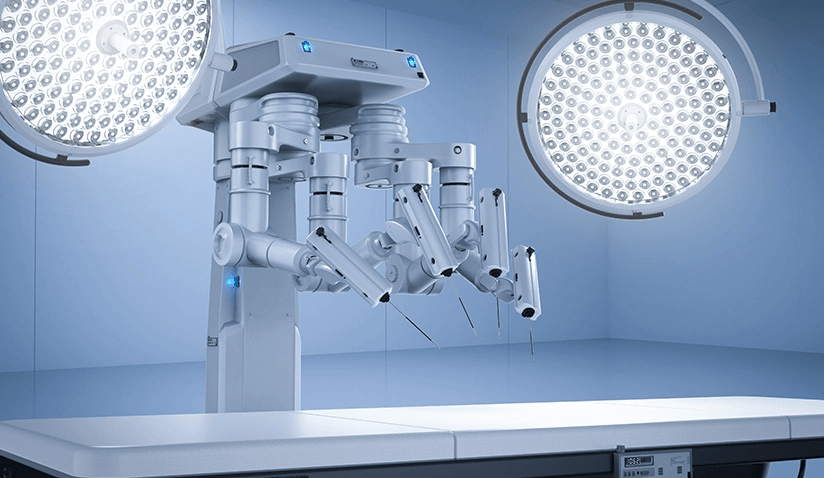Robotic Cholecystectomy – Is It Better Than Laparoscopic Gallbladder Surgery?

Various new and minimally invasive techniques for different types of surgery are on the rise. Among such surgery is robotic cholecystectomy or robot-assisted cholecystectomy for gallbladder removal.
Cholecystectomy refers to the removal of the gallbladder from your body. Cholecystectomy is a very common surgical procedure with around 300,000 cases performed annually in the United States. The prevalence of gallstones is more common in women and tends to increase with age. Recently, statistics have revealed that 92% of cholecystectomies are done laparoscopically. Robotic cholecystectomy is a type of surgery where the surgeon uses a robot to remove the gallbladder.
What is Robotic Cholecystectomy?
Robotic cholecystectomy is a procedure to remove your gallbladder, in which a surgeon utilizes a robotic machine to operate. There are various types of robotic cholecystectomy. Among them, the da Vinci system is one of the most popular ones.
Usually, a single incision is made in the abdomen. This is for the entry of various equipment, including a special camera. The camera provides a live feed to a screen showing everything inside the abdomen.
The surgeon then views this through a device resembling a microscope while controlling the robotic arms to perform the operation. This is similar to controlling switches and gears in an excavator for digging instead of manually doing so with the help of a shovel.
The procedure can take anywhere from 45 minutes to 1 hour. This is because it takes time to carefully navigate around the gallbladder and remove it.
Both robotic and laparoscopic cholecystectomies are minimally invasive procedures. Here we discuss the benefits and faults of both of these surgeries.
- Minimally invasive
- Three-dimensional visualization
- More degree of freedom
- Allows surgeons to navigate more freely
Cons
- Absence of touch sensation for the surgeon
- High cost
- Extra time required for setting up
- Unexpected malfunction of the robot.
Laparoscopic Cholecystectomy
Pros
- Affordable
- Has proven the test of time
- Minimally invasive
Cons
- Two-dimensional visualization
- A limited degree of freedom
FAQs
How long does a robotic cholecystectomy take?
The duration of surgery depends upon the condition of the gallbladder and the expertise of the surgeon. Usually, robotic cholecystectomy can take anywhere from 45 minutes to 1 hour or more.
Is robotic gallbladder surgery painful?
There might be slight post-operative pain in the incision site. You will not feel any pain during the procedure as you will be under anesthesia.
Is robotic surgery better than laparoscopic surgery?
It depends upon the condition of an individual. Robotic surgery was found to be better than laparoscopic surgery in regards to post-surgery complications and duration of hospital stay.
However, various factors like cost and availability of resources are also to be considered.
How many incisions are made in robotic surgery for removing the gallbladder?
It depends upon the type of robotic surgery done. The majority use a single incision, while some types use 3 to 4 incisions.
It also depends on the condition of the patient. Your doctor will be the best judge as to what will be best for you.
How long does it take for a scar to heal from robotic surgery?
Under normal circumstances, a scar from robotic surgery usually heals within 3 to 4 weeks. However, if the wound becomes infected and other complications arise, it might take longer. Therefore, it is essential that you discuss with your doctor how to take care of your wound after surgery.
The bottom line
Robotic cholecystectomy is a surgical procedure done to remove the gallbladder. Usually, gallstones and gallstone-related complications are the major reason for the removal of the gallbladder.
Robotic cholecystectomy is a minimally invasive procedure with comparatively fewer complications.
With robotic cholecystectomy, the duration of hospital stay is shorter. It also has fewer postoperative complications as per multiple studies.
Rehabilitation following surgery may take anywhere from 6 to 8 weeks. This is usually when the patient has completely recovered from the wounds, both internally and externally.
Although costlier, robotic cholecystectomy is a preferred safe alternative to laparoscopic cholecystectomy.

Sana Hospital Group is one of the largest independent healthcare providers in Germany. With over 50 world-class hospitals and more than 2 million patients yearly, Sana operates leading facilities, among them university hospitals, tertiary care centers, and specialized hospitals to deliver a broad portfolio of top-tier medical care. Whether it is preventive health care, an acute or chronic illness, a planned procedure, or a long-term diagnosis - more than 600 chief physicians, 4,500 medical professionals, and 11,000 nursing staff provide excellent treatment options, world-class medicine, and the best possible medical care.
Featured Blogs



